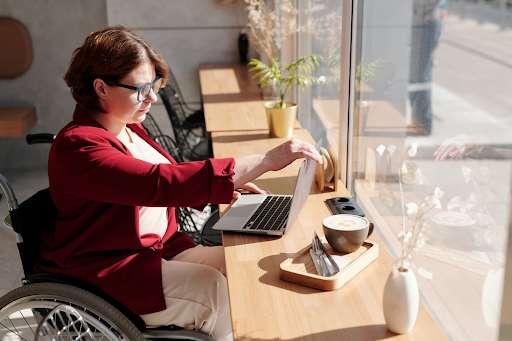Did you know that over 1 billion people worldwide suffer some form of disability? Aside from building record-breaking skyscrapers and sending humans on space exploration missions, modern technology has also come a long way in helping people with disabilities.

Selectability NDIS Cairns support the differently-abled in Cairns and explain that disabilities come in many different forms and severity, whether it’s difficulties hearing, seeing, walking, or learning. However, over the past decade, science, technology, and specifically medical technology, has developed life-changing advancements to improve the quality of life for the disabled. This dedicated article will explore some innovative ways modern technology is helping bring accessibility, convenience, and independence to those who suffer from chronic disabilities.
Adaptive Digital Technologies
As our reliance on smartphones and online communication platforms grows with each passing day, it’s only natural that tech giants offer the same kind of access to information for the disabled. Mobile operating systems, namely iOS, and Android, now provide many accessibility features for those with visual, hearing, or tactile impairments. Whether it’s to make a call, read an incoming text, write an email, dictate a search query, or use mobile navigation, these tasks are now fully accessible. Not only do these contribute to inclusiveness and “online equality,” but they also allow disabled people to perform routine tasks with more ease and autonomy than ever.
Cutting-edge Hearing Aids
It’s been estimated that around 450 to 500 million individuals (5% of the world’s population) suffer from disabling hearing loss, ranging from mild deficits to complete deafness. Whether it’s acquired at birth or developed with age, this condition can be quite handicapping on a day-to-day basis. That said, the industry-leading audiologists behind Siemens hearing aids explain that modern hearing devices are now tailored to fit the user’s needs; they come in various styles and features to guarantee optimum comfort and convenience. New products are designed and introduced to the healthcare market regularly, so with some quick research, you should find a fitting device to help you overcome your chronic hearing impairment.
Next-generation Visuals Aids
You may have come across one of those videos featuring a blind person seeing the light or colors for the first time. Awe-inspiring, isn’t it? That’s all thanks to how far technology has evolved. Nowadays, special devices and procedures like electronic glasses, contact lenses, helmets, and transplants enable those with visual impairment to experience and even regain some ocular function. While these strides are still in progress and experimental for the most part, we expect medical science to make these aids more accessible and affordable soon. Imagine how many people stand to benefit from such ground-breaking health advancements.
Revolutionary Prosthetics
Speaking of ground-breaking things, the field of prosthetics has been revolutionized by the recent introduction of bionic limbs. Every year, millions of people lose a hand, foot, arm, or leg to unfortunate accidents or as a result of amputations. Aside from restricting mobility, loss of limb also has a profound psychological impact on the disabled person’s life. Thankfully, much like hearing aids, modern prosthetics aren’t what they used to be 10 or 20 years ago; these cutting-edge replacements are now designed to fit the patient’s body and act as a fully functional limb, optimizing motricity and ensuring independence. With the sophistication of 3D printing, it isn’t rare to see athletes running marathons on a prosthetic leg.
Innovative Assisted Learning
If learning wasn’t challenging enough, as is it, some people come across additional obstacles when it comes to absorbing, treating, and retaining new knowledge. This is especially true for young students with autism spectrum disorder (ASD), attention deficit disorder (ADD/ADHD), dyslexia, or dyscalculia. That’s why many educational software companies have developed dedicated platforms and apps to assist people with special needs in the learning process.

Whether for English, maths, or foreign languages, students at all levels now have a wide range of adaptive digital tools to progress and overcome their learning disabilities. As more tablets and computers are making their way into educational institutions and facilities, it seems schooling for disabled students will prove infinitely more efficient in the future.
At the end of the day, it’s fair to say that technology is changing the world in impressive ways, improving the lives of those who suffer from all sorts of physical or cognitive disabilities. With ongoing research, medical breakthroughs, and the development of scientific equipment and manufacturing tools, it looks like the quality of life of the disabled community will only keep getting better year after year. So, if you or someone you know suffers from any disability, keep an eye out for recent innovations and inventions.





